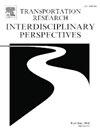IF 3.9
Q2 TRANSPORTATION
Transportation Research Interdisciplinary Perspectives
Pub Date : 2025-03-01
DOI:10.1016/j.trip.2025.101365
引用次数: 0
摘要
研究表明,心理影响是公共交通用户最关心的问题之一。虽然许多美国人在公共交通场所花费了大量时间,但这些场所的设计和维护对用户幸福感的影响尚未得到充分研究。在这项研究中,我们进行了一项调查,以更好地了解实施不同设计对人们的幸福感和感知指标的影响(N = 304)。我们向参与者展示了六张描述不同机舱配置的图片,包括(1)当前版本的机舱空间,(2)低维护版本,(3)美观增强版本,(4)支持自行车架的版本,(5)增加了工作空间的版本,以及(6)采用亲生物设计的改进版本。在观看完每张图片后,我们对参与者的幸福感指标(如压力和情绪)和公共交通感知指标(如安全感和合理成本)进行了评估。线性混合效应模型的结果表明,增加功能性便利设施和亲生物设计元素可全面提高幸福感和感知指标。相反,低维护则会使所有测量的幸福感指标恶化。这项研究为开发以人为本的公共交通空间奠定了基础,从而提高公共交通的采用率。本文章由计算机程序翻译,如有差异,请以英文原文为准。
Public transit of the future: Enhancing well-being through designing human-centered public transportation spaces
Studies show that psychological effects are one of the top concerns for public transportation users. While many Americans spend a significant portion of their time in public transportation spaces, the impact of the design and maintenance of these spaces on user well-being has not been fully studied. In this study, we conducted a survey to better understand the effect of implementing different designs on people’s well-being and perceptual metrics (N 304). Participants were presented with six images depicting different cabin configurations, including (1) the current version of the cabin space, (2) a low-maintenance version, (3) an aesthetically enhanced version, (4) a bike rack-enabled version, (5) a version with an added workspace, and (6) an improved version with biophilic design. After viewing each image, participants’ well-being metrics (e.g., stress, and emotion) and their public transportation perception metrics (e.g., perceptions of safety, and reasonable cost) were evaluated. Our results from linear mixed-effect modeling indicated that adding functional amenities and biophilic design elements led to an overall enhancement in well-being and perceptual metrics. Conversely, low maintenance worsened all measured well-being metrics. This research lays the ground for developing human-centered public transportation spaces that can lead to an increase in public transportation adoption.
求助全文
通过发布文献求助,成功后即可免费获取论文全文。
去求助
来源期刊

Transportation Research Interdisciplinary Perspectives
Engineering-Automotive Engineering
CiteScore
12.90
自引率
0.00%
发文量
185
审稿时长
22 weeks
 求助内容:
求助内容: 应助结果提醒方式:
应助结果提醒方式:


